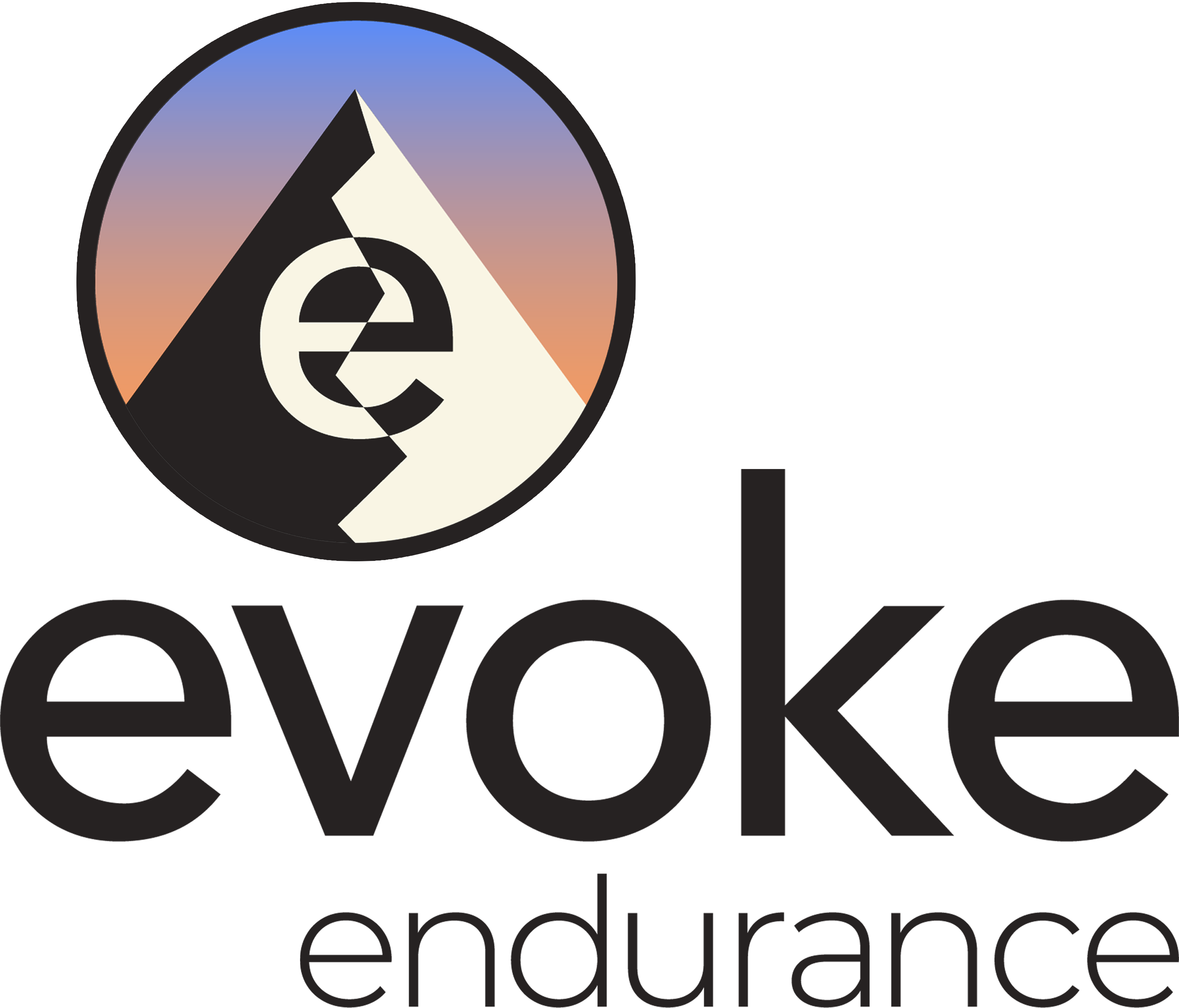ACL INJURY, REPAIR AND REHABILITATION
Author: Matt Hainstock
Jump Ahead To:
ToggleTHE INJURY
I’ve always said I didn’t want to get into skiing because I would tear my ACL. And that’s what happened on day two of year three. I tore my left ACL skiing.
Lying face down in the snow after feeling a pop in my left knee, I knew I had just blown up my year of climbing and guiding, let alone skiing. But there I was, and I practiced a quick bout of radical acceptance.
I gave myself one minute to cry. I felt that I had gotten hurt unnecessarily and had jeopardized my freshly booked days of summer work, letting myself and a lot of other people down. And I immediately lost a year of progress in the mountains. Letting go of future expectations was more difficult than the immediate pain.
But I couldn’t lay there for long. I still had to get out to the road. And so, when my buddy Mike skinned back up to me and stomped out a platform on the slope, I stood up, taped an “x” over my left knee, and skinned across the slope to an access road where I could walk out.
Two hours later we were back at the truck headed into Salt Lake and the Super Bowl party we had planned to attend. Mike asked me if I wanted to go to the ER – I said no. I didn’t need an x-ray because no bones were broken and my insurance was in Colorado anyway.
Why pay a costly bill for an X-ray in Utah?
Pre-Intervention Plan and Rehabilitation Plan: “pre-hab”, surgical consults, and PT consults
That night, after the game, I spent several hours finding an appointment with a surgeon near Boulder, Colorado, 500 miles away. I got an MRI scheduled and a meeting with a surgeon’s assistant 3 days later through a mix of previous knowledge of local surgeons and perusing my insurance website.
In the morning, I got up and drove my manual truck halfway across Wyoming and met my parents who were kind enough to drive me the rest of the way back to Boulder. I pushed down the clutch 12 times in the 250-mile drive into Wyoming.
The next 6 weeks were a blur, but I had purpose. I got my MRI results 4 days later and found I had a fully torn ACL, a grade 2 sprain in my LCL, and a grade 2 sprain in my bicep femoris (hamstring). I tried to make it work with the surgeon I had initially reached out to, but it didn’t seem like the right fit. The scheduling was another 2 or more months before they could get me in for surgery, and the waiting room was filled with non-athletes waiting for relief for their chronic ailments.
Navigating insurance and surgical meetings and Finding grants and financial assistance
A friend suggested that I apply for a Kees Brenninkmeyer Foundation (KBF) grant and they recommend the Steadman Clinic in Vail. Years prior, I had assisted my wife at the time through 4 knee surgeries at the Steadman Clinic. This experience was difficult since no resolution seemed to come from these interventions for her. So I was hesitant to return to a place with so much baggage. For this reason, I refer to Vail as “trauma town”.
That said, the Steadman Clinic employs and trains many of the best orthopedic surgeons in the US, and repairing my ACL at the same facility as the US Ski Team seemed like a no-brainer. Once I had taken some time to reflect, baggage or no baggage, the Steadman Clinic was the right option for me. I read up on my potential surgeon and prepared my list of questions for my surgical meeting – focusing on graft choice and recovery timeline concerns.
After spending two weeks getting my grant application together, I was fortunate to receive a KBF grant just days before my scheduled surgery. This was a major change heading into surgery – both emotionally and physically. The grant paid for my surgery and 6 months of Physical Therapy. (And I was able to extend the PT to 12 months.) This simplified my surgical decisions. I could choose what was best for me and not what my insurance company might have recommended. Even with my insurance coverage, the price tag would have been $20,000+ for the surgery and physical therapy.
Surgery or Intervention
40 days after my injury I had surgery. My insurance, grant, post-surgical plan, and physical therapy were all lined up. I had done 4 weeks of pre-hab (weight lifting and swelling reduction). Practicing the exercises before surgery made a huge difference after surgery. I already knew what they should feel like.
Early Post Surgery and Initial Rehab – (ROM and Swelling Reduction)
 The surgery and my initial first 6 weeks of PT went off without a hitch. I was walking in 12 days (goal of 14) and had full range of motion by week 4, 2 weeks early. It was a slow process day to day and in between ROM sessions on the floor, mindfully extending and flexing my knee, I watched spring basketball and old NBA finals games. It was helpful for me to see other athletes who have undoubtedly dealt with similar injuries and were able to maintain their athletic careers.
The surgery and my initial first 6 weeks of PT went off without a hitch. I was walking in 12 days (goal of 14) and had full range of motion by week 4, 2 weeks early. It was a slow process day to day and in between ROM sessions on the floor, mindfully extending and flexing my knee, I watched spring basketball and old NBA finals games. It was helpful for me to see other athletes who have undoubtedly dealt with similar injuries and were able to maintain their athletic careers.
The competitive athletic mindset helped me stay focused and treat myself with the level of care that professionals would receive. I asked myself, if I had the resources of a professional athlete, what would my recovery plan be? And I knew some of the answers. Treating my body and mind with that level of care and intention would set me up best to return to the sports and craft that I deeply enjoy and center my life around.
Middle Rehab – Healing and Base Level Strength/Setbacks and Adjustments
At the 6-week point, there is a big shift in what different PTs, surgeons, and protocols would suggest for a recovering ACL patient. I had a patellar graft, which requires more time to recover than a hamstring or allograft (cadaver). My PT in Washington was pushing me faster than I felt comfortable with, and after a day of deep, heavy squats less than 12 weeks post-surgery, I began to feel like I might need to make some changes.
My experience and knowledge of the recovery process go back 10+ years. I have helped others rehab 8+ knee and shoulder surgeries and I had spent years working with PTs personally, to adapt to overuse injuries and hopefully make corrections before I was injured. All this I had done with the thought in the back of my mind that if I did have an injury like this I could progress as smoothly through the process as I could. I’d done my homework and my “pre-hab” for several years.
The next 6 months did not go smoothly, but I made progress. I rode my bike a lot, rock climbed sooner than I should have, and tried to make the most of the summer. I worked at a winery and was on my feet 4-9 hours a day, 32-40 hours a week starting eight weeks post-surgery.
When I discussed my very real and loud crepitus I was told that I was getting old (I’m 35) and that maybe I should find a different career. The reverse psychology didn’t work for me. It didn’t help that I was also told that I wouldn’t ever get my atrophied quad and calf to be equal to my noninjured side again.
Due to my past research, I was familiar with Blood Flow Restriction Training (BFR) as a tool that is becoming widely used by PTs. “Blood-flow restriction training can help patients to make greater strength training gains while lifting lighter loads, thereby reducing the overall stress placed on the limb” is the definition provided by the American Physical Therapist Association website.
October came and I went to my 6-month check-up in “Trauma Town”. My 6 month results weren’t ahead by 2 weeks anymore. I had been adding more vertical to my walks and hikes and enjoying some mild runs on my Fall larch marches, but the surgical team suggested I not add any more vertical to keep stress off the quad. I didn’t exactly listen, but I stopped adding vertical for a few weeks.
Unfortunately, on a beautiful day hiking to Kangaroo Pass, I felt a “pop” in my knee. I was terrified and thought I had blown out my graft on something so insignificant as a 2-inch drop in stiff boots. (I hadn’t). I had just fully extended my knee and it wasn’t used to that range of motion yet. After months of guarding, I’d finally gotten my quad to the beginning point of growth and not just recovery.
But I didn’t know that at the time. So, I walked out, luckily without pain. I had a new crunch and pop in my knee and this was more than crepitus. I was quite troubled. I was around 7 months out and all of a sudden felt like I’d messed up the whole process.
Talking to many friends and medical professionals, this type of “scare” is a common experience. An insignificant MOI (mechanism of injury) partway through the recovery process can feel like all the work has unraveled. Having a supportive PT and framework around you can help so that when something like this comes up it’s viewed as real, but not the end of the world. You can get a professional opinion and assessment and keep moving forward. Sometimes forward is taking a step back.
Middle-Late Rehab – Strength, Correcting Imbalances, Early Back to Sport/Cross Training:
 Sometimes things can work out even as they feel like they may be falling apart. I had an opportunity to head back to Colorado and go to the PTs whom I had worked with extensively in the past starting at the end of October. They work with IFMGA Mountain Guides, North Face athletes, Tour de France riders, and all the local crazy amateur crushers who call Boulder home. Revo PT is focused on rehabbing athletes back to better and stronger than before. My grant had been extended another 6 months, I had a place to live, and I had no reason to not give Revo PT my time and focus. Again, I packed my truck and undertook the long trek back to Colorado.
Sometimes things can work out even as they feel like they may be falling apart. I had an opportunity to head back to Colorado and go to the PTs whom I had worked with extensively in the past starting at the end of October. They work with IFMGA Mountain Guides, North Face athletes, Tour de France riders, and all the local crazy amateur crushers who call Boulder home. Revo PT is focused on rehabbing athletes back to better and stronger than before. My grant had been extended another 6 months, I had a place to live, and I had no reason to not give Revo PT my time and focus. Again, I packed my truck and undertook the long trek back to Colorado.
Within three days of getting back to Boulder, I started a protocol for Blood Flow Restriction (BFR) training. The goal was to create a balance between my left and right musculature. My PT, Brian, one of the owners at RevoPT, said typical growth is 0.5cm per month. At this point, I had a 2.2cm difference between my left and right side.
I committed myself to the process and put in 5-6 days a week. I changed my diet and started consuming a lot more protein which slightly restricted my overall caloric intake. That, combined with my increased strength training I put on muscle, and quickly. I went from approximately 40-50g of protein per day to 100-120 grams of protein per day and kept my caloric restriction to about 1800 calories rather than the higher calorie diet I am used to when I am working a busy summer schedule.
In my first 5 weeks, I gained 1.2cm of the 2.2cm back in my quad. My left side is currently 0.5cm different from my right side, both calf and quad, but that is closer to equal than I was pre-injury. I am now back to sport and focused on general lifting (deadlifts and squats), uphill skiing, and gym climbing for my late winter into early spring training cycle. My goal is at 14-16 months to be above pre-injury levels and entering a phase of trusting the new graft and mechanics of my “new knee” in consequential terrain.
BFR is still an option to continue to close the size difference between sides and will be an excellent recovery tool throughout my spring and summer seasons. More physiological response at a lower stress load – what’s not to love?
Return to Sport and Adjustment Phase – moving forward mentally and physically
These last 6 months made all the difference in my recovery. Things still aren’t perfect, but they never are. I still have a click in my left knee, but no pain and no restrictions to my activities. I’ve been able to do multi-day ski tours, ice-climbs on lead, and continue my pre-season strength plan. I am on track to be ready for guiding and climbing during the summer 2024 alpine season.
Putting the timeline into context, it feels like no time has passed at all. But that has as much to do with mindset and having a framework. Many people have successful ACL reconstructions and there are plans that will help almost any athlete through this difficult process. Finding the right professionals to work with you can be the difference between coming back okay, and coming back rejuvenated and ready to take your sport and activity to the next level.
Overall, in my 5-6 months of rehab in Colorado, I have met all of my “golden goals”:
- Full Range of Motion, equal on both sides
- Parity/No muscular size imbalance between injured and non-injured side
- Less than a 5% difference in muscle firing between sides
- Return to Sport at 70%+ of pre-injury levels
-rock and ice climbing, uphill skiing, hiking, and weight lifting - Ready for a full return to sport and work
Conclusions and Key Takeaways
-Get an MRI, and be willing to pay ~$500 out of pocket to get it ASAP
-Look for grants and financial assistance
-Keep your insurance and deductible insurance up to date and know how to use your account
-Listen to your gut. If a surgeon or Physical Therapist is recommending a course of action that doesn’t suit your current or future lifestyle and activity level, get a second opinion. Not all surgeons or Physical Therapists are set up to meet your unique situation.
-Find ways to express what your activity level expectations are. I was able to say, that over the next year, I will want to run, hike, rock and ice climb, and do yoga – what is the timeline for each of these? My surgeon’s trainer was able to provide a reasonable and adaptable timeline. Her feedback and a tangible and custom timeline were incredibly useful.
-Be kind and patient with the medical teams – they are trying to do things within the confines of insurance, protocols, and their past experience, but ultimately, good medical professionals want the best for you.
-Don’t get an allograph (cadaver graft) if you want to be active the rest of your life, and consider a patellar graft for ACL reconstructions.
Additionally, the quad graft is still relatively new, and there are some complications and issues with the quad graft, specifically in women. Damaging the quad tendon for the graft causes an even slower recovery and return to activity and sport. Hamstring grafts are an okay alternative, but they tend to stretch over time, and the risk of re-injury is higher.
I spent 30 minutes with the surgeon discussing different grafts and getting the team’s experiential opinion. It doesn’t mean that my solution is the only one, but with the information I was presented by one of the best clinics in the US, that was the conclusion I came to.
-Be kind to yourself and take the time to come up with a plan. As a guide, I have a level of pre-trip expectations and orders of operations I use in my professional and personal life which were, for a situation like this, really helpful.
Even if you aren’t a professional athlete, your body and recovery plan should be an ever-adjusting and custom process for you. Take the time to ask questions and learn. With such a high cost of time, energy, and money, it behooves one to learn as much as they can. Each setback and step forward is an opportunity to learn.
Matt lives and works in Washington and Colorado. He enjoys nothing more than spending days in the mountains crossing glaciers, climbing rocky ridges, and sharing those experiences with fantastic people. You’ll find him in his downtime enjoying his garden




